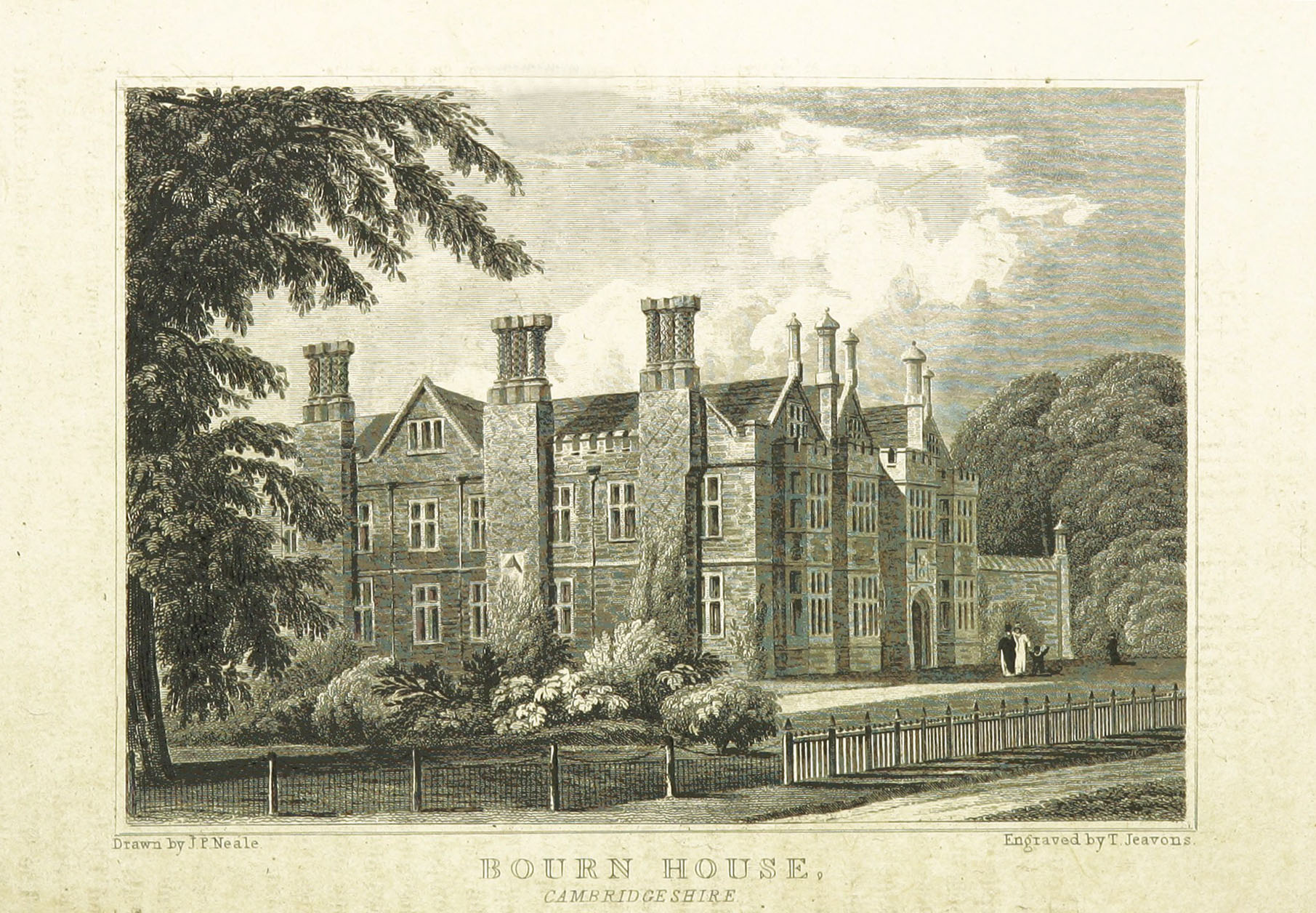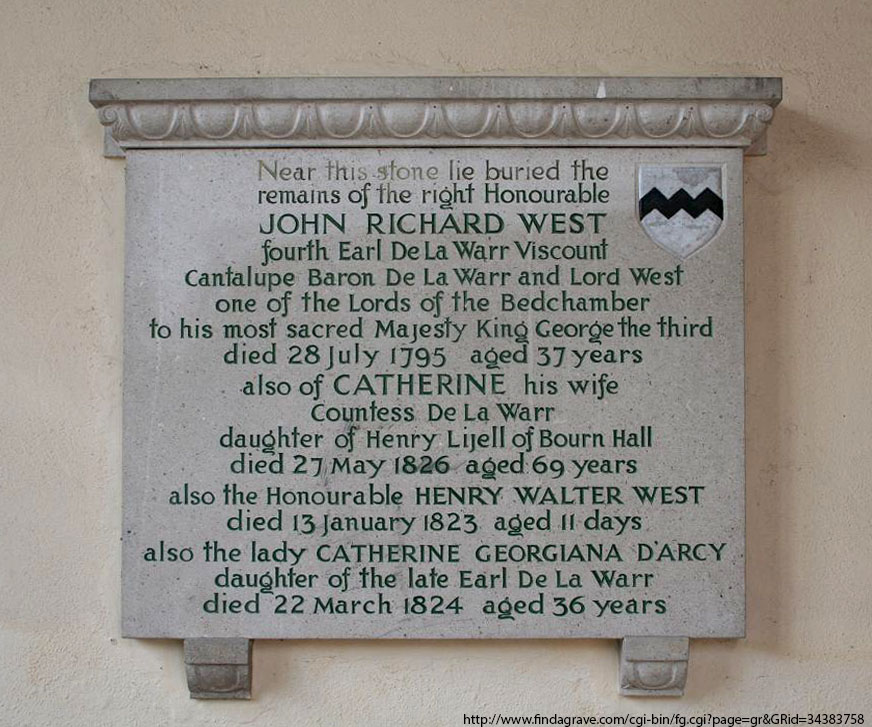Henry Lyell’s Bourn Hall, Cambridgeshire, England
The present Hall at Bourn was built in about 1602 for John Hagar; occupying the site of an 11th century castle built by Picot de Cambridge, the first Norman Sheriff of the shire. The village of Bourn is about 10 miles west of the University town of Cambridge in the county of Cambridgeshire. Bourn House, a picturesque old mansion, is built of brick with stone dressings. The house was re-modelled after 1733, then in 1817 the architect John Adey Repton (1775-1860) was commissioned to restore and enlarge the Hall. Together with his father Humphry Repton (1752-1818), he probably also advised on the layout of the grounds. A picturesque landscape and ornamental garden was created in the grounds. Alterations to the Hall were undertaken at the end of the 19th century by the architect Norman Shaw. In 1979 the Hall and park were sold separately, the Hall and its gardens being established by Patrick Steptoe and Robert Edwards as an infertility clinic, in which use it remains today. The original builders and first residents of Bourn Hall were John Hagar and his wife Frances Peyton of Isleham (1560-1619), daughter of Sir Robert Peyton and Lady Elizabeth Richii. Rainwater gutters at the front of the Hall still have the initials of John and Francis Hagar. However, the Hagar family left Bourn Hall in the 1730s, and in 1733 the estate was purchased by the wealthy East India Company director Baltzar Lyell. Baltzar Lyell was born in Stockholm, Sweden in 1672, the third son of Henry Lyell (1627-1710) and his wife Judit Rokes (1647-1705). Baltzar was educated at Uppsala University but decided to settle in London in the 1720s. In April 1728 he was elected a director of the East India Companyiii and remained a director until his death in 1740. Baltzar’s wife Elizabeth inherited Bourn Hall following her husband’s death in 1740 and remained in residence there until her own death in 1752. The couple had no children, so that in 1752 Bourn Hall was inherited by Baltzar’s nephew Henry. Henry was born in Stockholm in 1717, the son of Adam Henriksson Leijel (1669-1744) and his wife Hedvig Lucia Lohe (1684-1770). Henry eventually sold all his Swedish property and was naturalized in England by Act of Parliament in 1740. In 1756 he married Catherine Allestrie (1729-1811), their daughter Catherine being born the same year. On 22 April 1783 Catherine Lyell married John Richard West, 4th Earl de la Warr in Westminster, Londoniv. After the death of Henry Lyell in 1803, their son George John, the fifth Earl, inherited the property. He assumed the name Sackville-West in 1813 on his marriage with Elizabeth Sackville. Considerable alterations were made to the house and grounds in 1817–19 under the supervision of John Adey Repton. The estate belonged to the De La Warrs until 1883. During this period Bourn was visited by Queen Victoria and Prince Albert while they were staying at nearby Wimpole Hall. The last family connection with the village was Lady Mary, daughter of the 7th Earl and wife of Major Griffin, who bought the Hall in 1921 and lived there until 1957. The property was then acquired by Peter and Ann King. Bourn Hall was bought by Patrick Steptoe and Bob Edwards in 1980 and became a world-famous clinic for the treatment of infertility.
Henry Lyell, his daughter Catherine, Countess de la Warr, and her husband John Richard West, the 4th Earl de la Warr (who died at the young age of 37) are buried in the churchyard of Bourn’s Parish Church of St Helena and St Mary. The photographs below are of the memorials erected to them in this church. Henry Lyell’s last will and testament was drawn up on 26 August 1795 and probated on the 30 September 1803v.
Notes: i From the book: Views of the seats of noblemen and gentlemen, in England, Wales, Scotland, and Ireland, vol 6 by John Preston Neale, Thomas Moule , published by Sherwood, Jones and Co., London 1823. ii See The Baronetage of England: Or The History of the English Baronets, and Such Baronets of Scotland, as are of English Families; with Genealogical Tables, and Engravings of Their Coats of Arms, Band 1, 1801 iii See Vol XIII of the Historical Register, London 1728. iv For date of his marriage, see The London magazine, or, Gentleman's monthly intelligencer Vol XXV for the year 1756 v Document PROB 11/1399/176 in National Archives.
|




